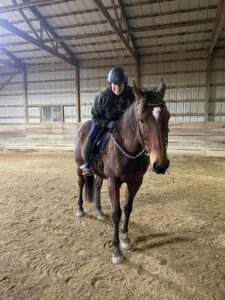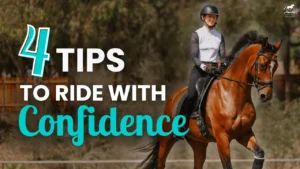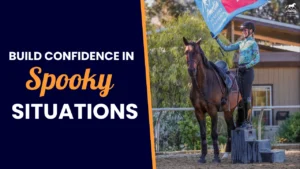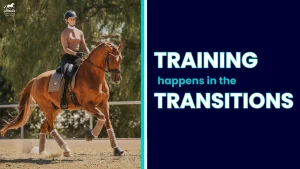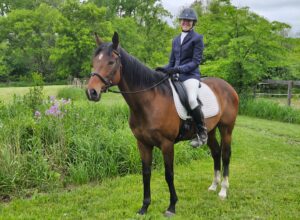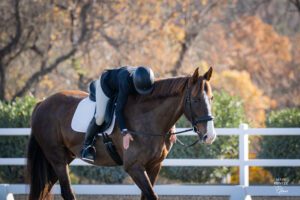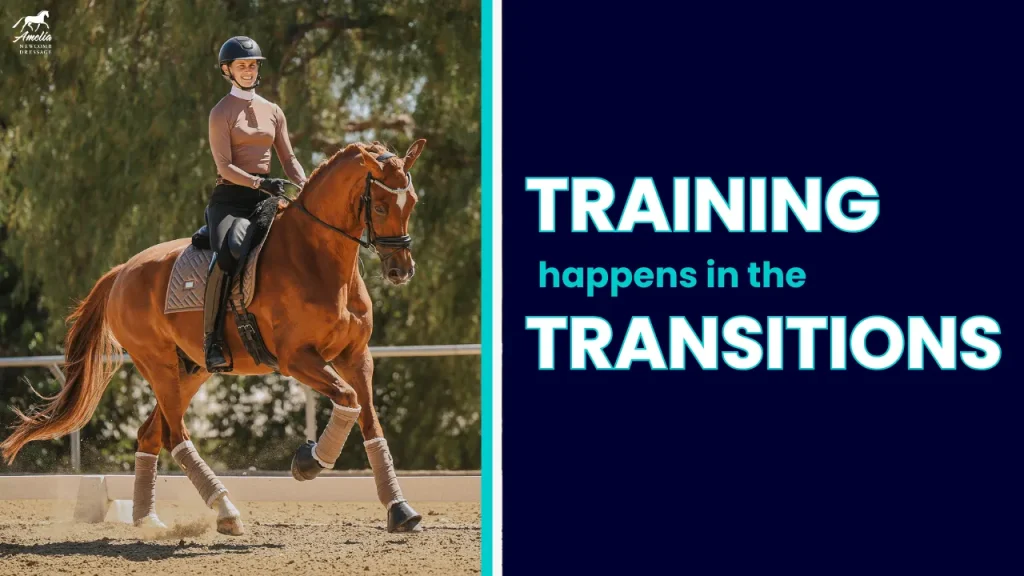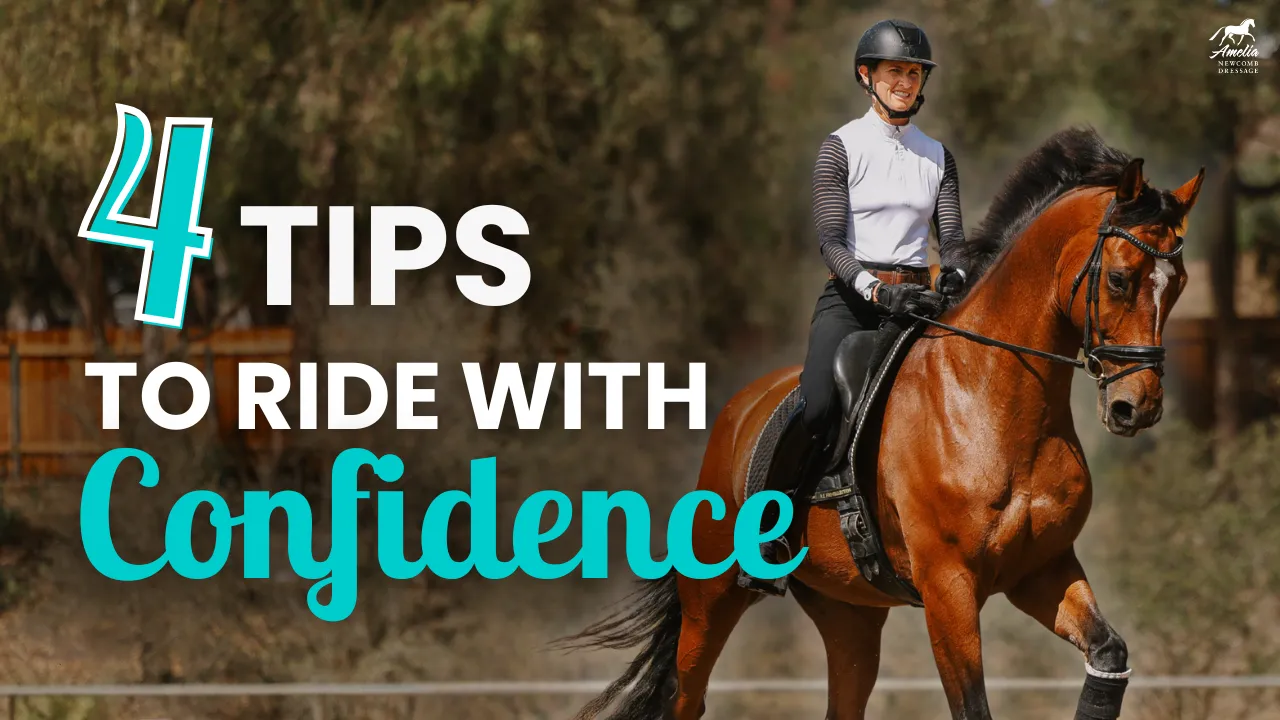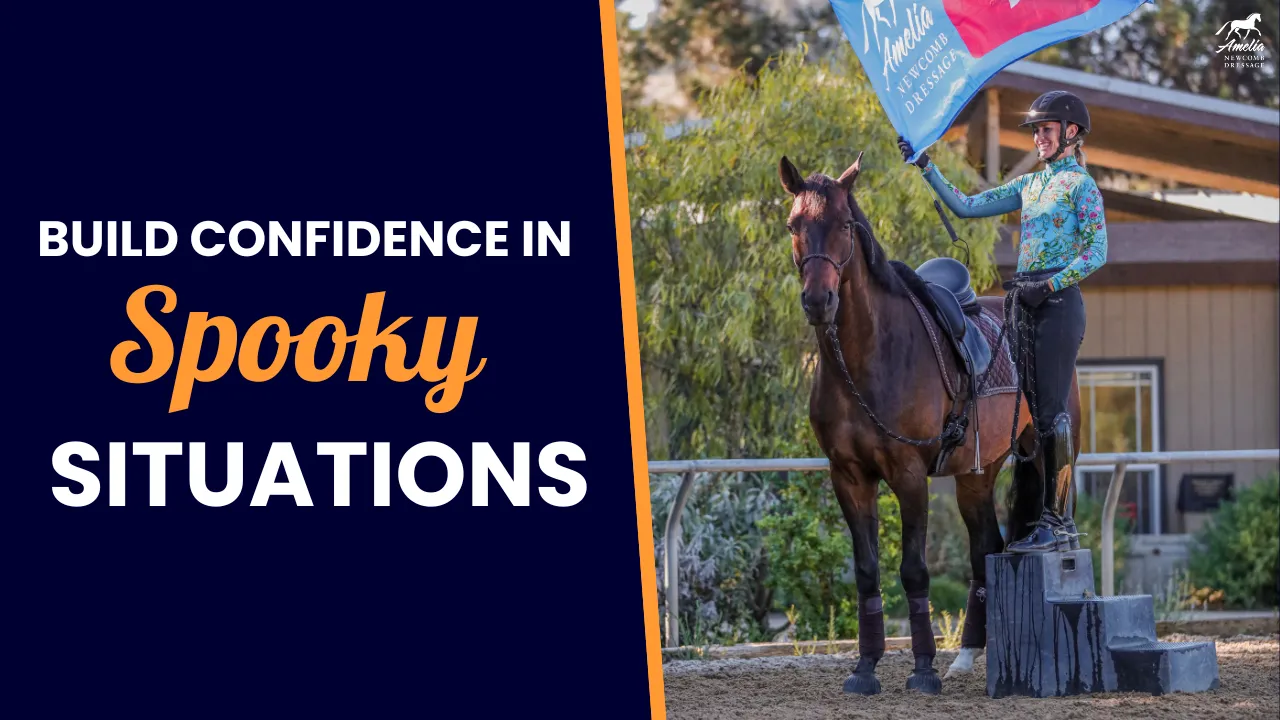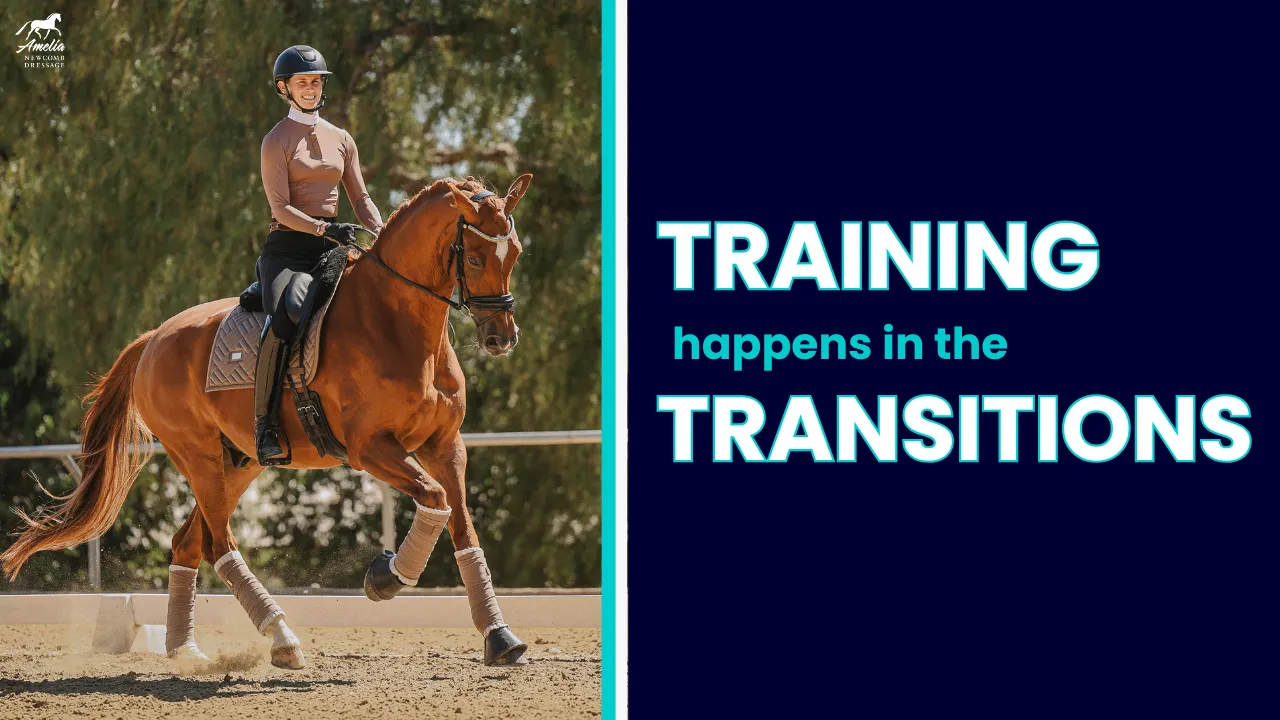Recently I posted a video about flying changes. You may have tried a few flying changes since then?! Flying changes are one of the hardest things to teach a horse and the key to training the flying changes is the preparation! This week’s video is about understanding exactly how to introduce the flying changes. Because flying changes are such a tricky thing to master, the key to nailing them is in the preparation. And you literally cannot overdo the preparation!
My recent video on flying changes was on Natasha who is a Grand Prix horse, but this week I’m on a younger horse who is training Second Level so that I can show you the steps we need to prepare for the flying changes!
The first thing that needs to be practiced over and over to perfection before the Flying Changes can commence, is the Walk-Canter-Walk transitions. These should be at a point of fluidity and ease. If you have to do a lot of badgering or nagging to get the walk canter walk, then you need to go back and get that going smoothly before teaching the flying changes.
The aids for the walk-canter transition are
- Inside seat bone
- Outside leg behind the girth
- Inside leg at the girth
- Slightly softening the inside rein
During this transition, two things are very important.
- Keeping your horse round during the transition.
- Making sure that the last steps of the walk and the first step of the canter are very active. The first stride needs to be “jumpier”, with more impulsion than normal because this is the stride that will eventually be the flying change stride.
Of course, all of this has to be completed on BOTH leads successfully before you get to attempt the flying change. For these transitions, the hind legs, wither and jaw need to stay supple and through before we can think about changes.
Once you have the canter walk canter going smoothly you can then work in a shallow loop serpentine. For example,
- Canter right lead from M towards X
- Make a transition to walk halfway
- Ask for left canter and canter through X and toward F
- Transition to walk halfway toward F
- Ask for right-lead canter again and continue on through F.
TROUBLESHOOTING
- If the horse runs through your aid (as Ralph does in the video!) ask them to back up before repeating the original aid.
- If your horse is spooky, you can ask for shoulder fore riding towards the spooky side.
- If they are being a bit naughty, bring them back and ask for turn on the forehand to refocus their attention and and get them moving off your leg correctly.
It’s SO important that these steps are taken slowly. Even on a day when you feel like you could probably attempt the changes for real, err on the side of patience and muscle building, and leave it for another day. The longer you can leave it, the more prepared your horse will be!
Have a look at this video. Let me know in the comments if you find this helpful!
Thanks for watching and good luck with your flying change prep!
